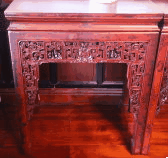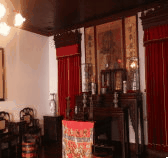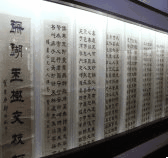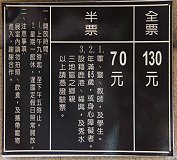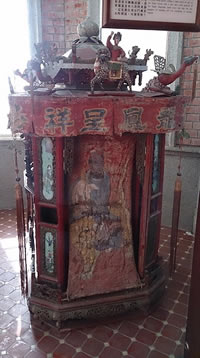
![]()
The Tourist Service Center provides the consulting and guiding services with the introduction of the Lu Kang Art Folk Museum, the tour map, things for the tourists to remember;moreover, there are also many souvenirs for the tourists to buy in the meseum.
- Introduction
- TheView
- Mr.Gu Sen Long
- isit moving lines
- rules to obey
- outdoor relics
 |
The introduction of Lu-Kang Folk Arts Museum |
Lu-Kang was located in the north-west in Taiwan. The name of Lu-Kang appeared in 17th century. At those days, there were many deers gathering around the plain along the coast. Since 17th century, lots of the people of mainland Chinese moved to Taiwan. Lu-Kang was the second city at that period. Lu-Kang was also the important city of the business, the culture and the transportation in Taiwan. The historians called 4th period of Taiwan Culture the『Lu-Kang』era, which was from 1684 to 1842. This description of the history also showed the importance of Lu-Kang. There is an old saying in Taiwan『1st Fu、2nd Lu、3rd Meng-Jia』. The 2nd Lu means Lu-Kang, which was one of most important town of culture in Taiwan history. History researchers called the 4th period of the Taiwan Culture『Lu-Kang Period』.It was from 1684A.D. to 1842 A.D. On Nov.10 in 1973, Mr.Gu zheng-fu and his elder brother, decided to donate their house to the society in order to promote the Chinese culture, preserve historic relics, develop tourism, encourage the local teenagers to study. Besides, they set a culture foundation of Lu-Kang Folk Arts Museum. The foundation was formed on April, 1973. Mr. Lin wei-zen, the principal of Chin-Cheng High School, was hired to charge the affairs of the foundation. He invited local scholars to form the committee of the foundation. In the end of the same year, a good library was also ready for the local people to study. The library was formal unveiled on Nov. 10 in 1973. The historic relics collected in the museum showed their values in the modern rapid society. The museum aimed to preserve and study from the traditional experiences. Moreover, the museum hoped to spread and exchange the historic relics in order to promote the emphasis on the traditional treasure.
|
By Lu Kang Art Folk Meseum August, 1990 |
 |
Pictures of the Service Center |
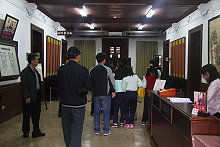 |
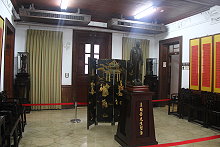 |
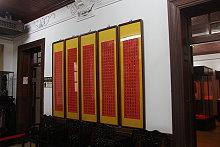 |
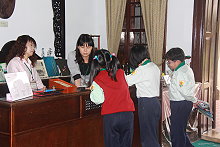 |
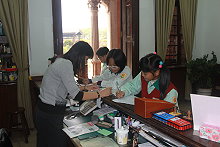 |
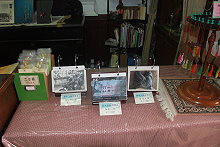 |
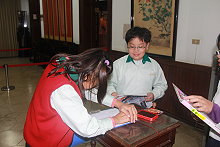 |
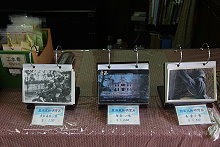 |
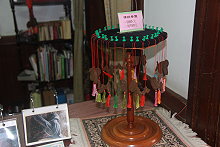 |
 |
Mr.Gu sheng-rong |
| Mr.Gu sheng-rong was born in 1866 A.D. He was born in a little village near the coast. Later, his ancestors moved to Taiwan in Lu-Kang. When he was a little boy, he followed a local teacher to study. He was so smart that he started to conduct the business between the mainland Chinese and Taiwan, especially the business of salt. | |
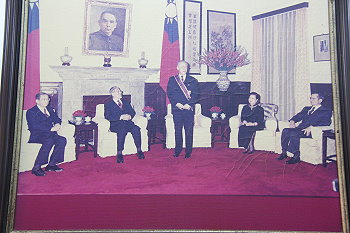 |
After work, Mr.Gu sheng-rong had been the chairman of the police office, which did much to the stability of the society and the economy. He was dead in 1937 on the age of 72 years old. He was buried in the Ba-Gua Mountain. |
| The bronze statue of Mr.Gu sheng-rong was the work of Mr Chang shia-yu. Mr Chang shia-yu was born in 1905. The master was good at creating the bronze statue. He didn’t care the money and the fame, so he spent all of his energy creating works. The features of the works of the master were so concrete and near to the real life of old days in Lu-Kang. | 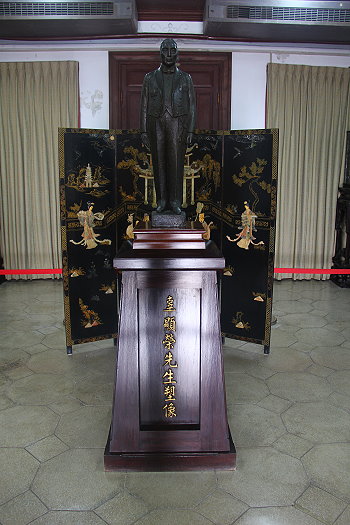 |
 |
The direction of visiting the West Building |
The red line on the picture is the direction
|
 |
Rules to obey-as for the tourists |
When you come to the Museum, you have to obey: 1:Well dressed. esides, there are also some souvenirs for the tourists to buy after visiting the museum.! |
|
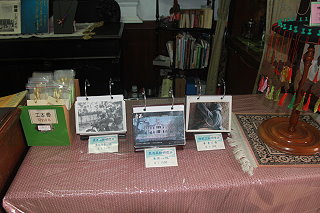 |
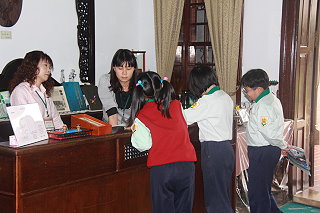 |
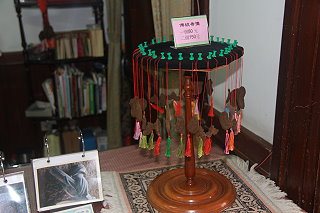 |
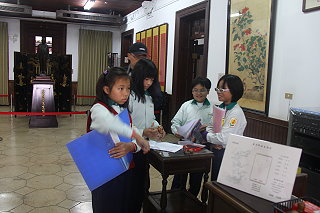 |
 |
The great knife of Wu-Zing-Shi and Zh-Shi Board |
The contents of the test included launching the arrow while riding a horse, launching the arrow while taking a walk, pulling hard bow, rising up the huge knife, rising up the big rock and silently memorize the Wu Book. There were clear standards of the test and their score were decided according to their performances. |
|
||
Zh-Shi Board was used to be the leading team of the emperor to maintain the order of the people. The shape of the board was rectangle with words written on it. Generally speaking, the words were『Be serious!』、『Be quiet!』. The Zh-Shi Board stored in the Lu-Kang Folk Arts Museum was owned by the Mr.Pu zau-chin, the 4th Grade Wu Jin Shi of the Qing Dynasty. |
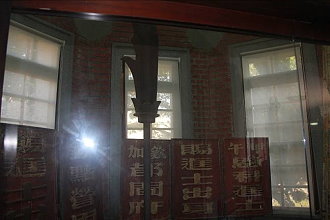 |
 |
Litters of the bribe and woman matchmaker |
In order to show the happiness of the wedding, the litter of the bribe had to be strong colorful. The traditional ones were the red color and the gold color. On the curtain of the litter, a picture of Pa-Gua was written to avoid the evil. |
|
||
The role of the woman matchmaker was very important for the traditional Chinese wedding. She had to arrange all the courtesy and obey all the customs in the Chinese culture. |
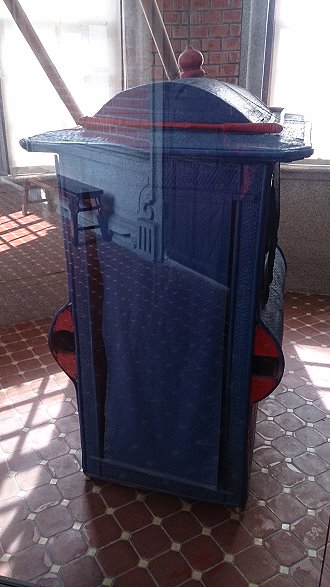 |








